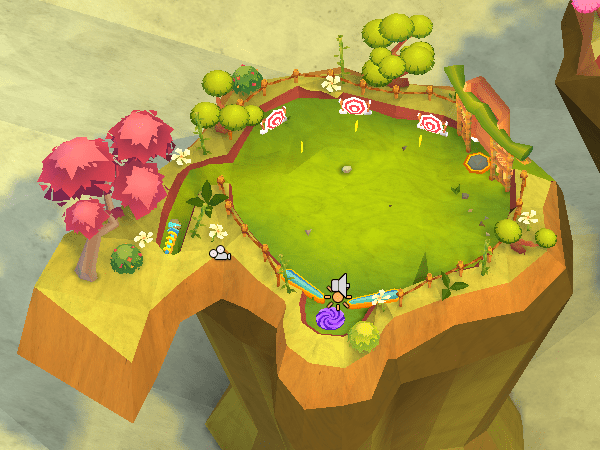18 Nov Level Designs for Momo
By now you know that we are working hard on our new game, Momo Pinball. We follow the adventures of our hero Momo, a little momonga who has to rescue his friends from a bunch of evil owls.
This is not your regular flipper game: instead of playing a traditional cabinet with lots of lights, bells and whistles, you play through different levels in an epic adventure. There is a storyline, enemies, end bosses – the whole enchilada!
All these levels are great, but they all need to be designed. To raise the stakes, the quality of the level designs determines if this game is going to be any good. So how do you tackle this? How do you go from a simple idea to a level that is both fun and good-looking?
Doodles
In the early parts of development, we start with a blank sheet of paper (or Photoshop canvas) and simply start doodling. You can see some doodles below. They are simple sketches, a platform for ideas. We start with the abstract layout and add the level visuals on top of that.
This is a fairly solid start – you have some basic ideas and a sketch conveys most information you need for building the level. However, as we progress in the level design process, it we need a more formal approach to make sure the quality of the levels is consistent.
Patterns
The problem with pinball games is that the level design is heavily focused around the spatial quality of the level. The ball has blind spots and sweet spots, and the way you shape your level outlines determines the difficulty of the level. This is essential for the player experience: If you don’t get that right, the level will be a failure. You need to be tweaking an infinite number of parameters: It can be a matter of changing the slope angle, size of the level, or obstacle positions. Even small changes can have big effects.
You can’t sketch this out, because it requires experimentation. Along the way we have discovered some basic “rules” of how a level should be constructed. This is why we started working with patterns: Little pieces of a level that we have found to work well. To discover a pattern, we execute small, focused experiments that should result in good gameplay. When an experiment passes the test, we add it to our pattern library.
Above: A pattern test sketch, and the pattern test in action.
Think of it as a lego construction kit. Patterns are like simple blueprints that have proven to give good effects, and by stringing these blueprints together, you can create longer levels with more complex gameplay. Once you have the basic rules in place, you can play around and modify things to make each level a different experience.
Piecing it together
When you have the collision models and layout ready, the next step is to add the visuals. We look at the storyline, in particular in which part of the world this level should play out. There is a balance here, where the levels we create shape the world, but the world also shapes the levels. There is an overarching storyline that we use as a guideline, but this is not carved in stone. The fun factor is much more important, so if we have a good idea we will build it and adjust the storyline if necessary.
Here are some screenshots of some of the levels, made by Jimmy de Meza, the lead artist for Momo Pinball. Enjoy! 🙂
Above: The end section of level 4 as seen from the Unity editor
Above: The start of level 1, viewed from a distance
Above: The start of level 1, as seen from inside the game (with the old user interface)
What do you think so far? Are we on the right track? Please let us know in the comments!
PS: We are going to publish a public alpha soon! Stay tuned by signing up to our newsletter (make sure you select the preview option) – or follow us on Twitter.










Martijn
Posted at 15:00h, 18 NovemberLove it guys. Really dig the combination of pinbal and platform mechanics. Design brings me back to some sweet Crash Bandicoot memories.
Im curious about the story telling. Why am i breaking targets and evading owls? And what do i have to learn and conquer to reach my goals? Brings some extra logic and fulfillment to the experience.
Derk
Posted at 15:23h, 18 NovemberHi Martijn,
The owls have plundered your village, and captured your friends and family… so it’s payback time. Owls are pretty strong though, so you need to find their weak spots.
The targets are in the first level. Panda (your mentor) has rescued you from the owl raid, and he has taken care of your injuries. This is an exercise to strengthen again, and to see if you are ready for the real world.
More on the story is coming soon! 🙂
Martijn
Posted at 10:26h, 29 Novembersweet 🙂
Roland
Posted at 22:05h, 11 DecemberI like the looks of what your doing. All the best for project.
Hervé
Posted at 03:12h, 31 DecemberI really like the style you’re going for. Nice colours and lighting 🙂